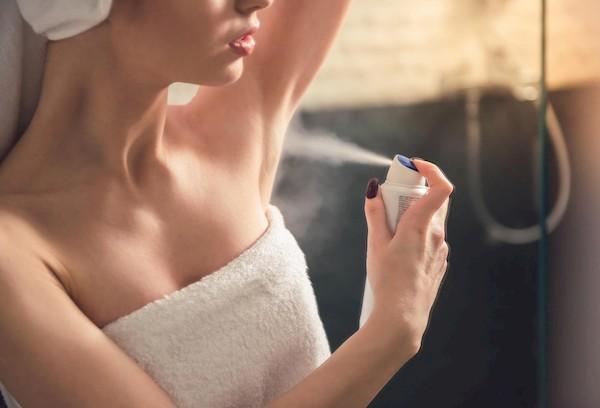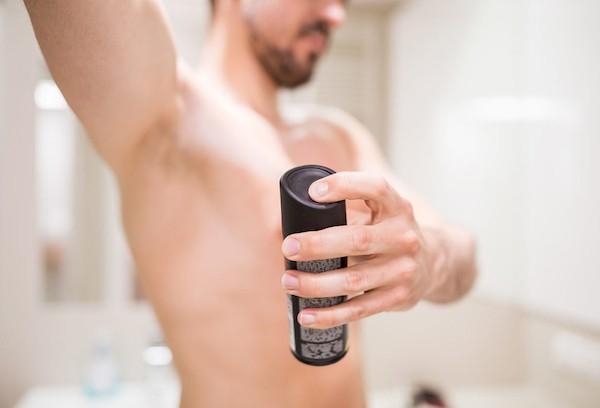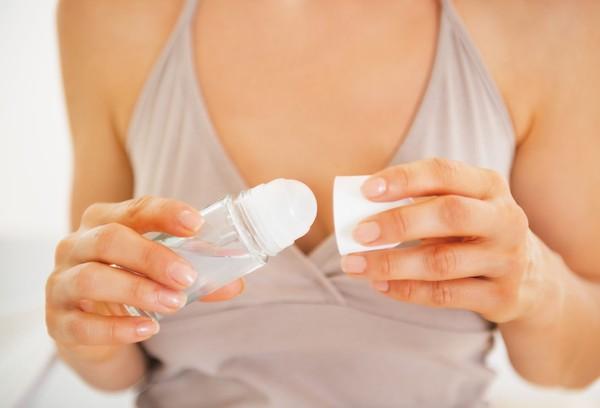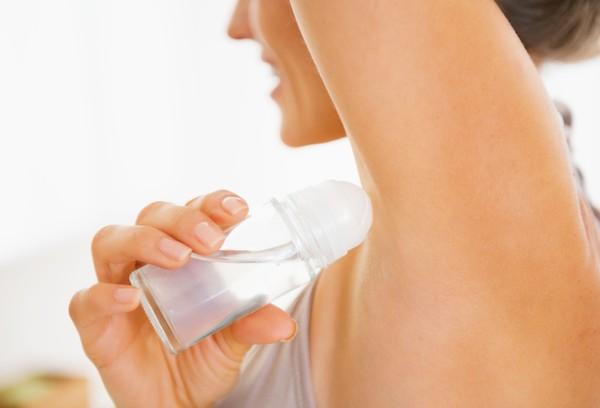What is the difference between deodorant and antiperspirant: be careful, the differences
To choose the best product to keep your body clean, you need to know the difference between a deodorant and an antiperspirant. The first and main difference is that deodorant acts on bacteria, whose activity is accompanied by unpleasant odors. It assumes the presence of perfume, fragrances. Antiperspirant inhibits sweat production, creating jelly-like plugs in the ducts.
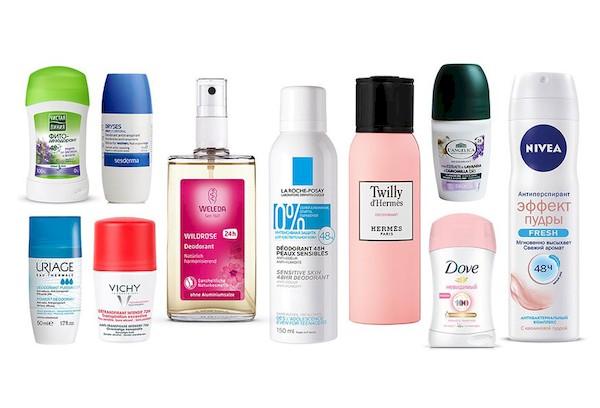
How to distinguish a deodorant from an antiperspirant?
Most cosmetic products for “anti-sweat odor” are combination antiperspirants and deodorants. It is less common to find deodorants without antiperspirant properties separately, and vice versa.
How to distinguish a deodorant from an antiperspirant:
- composition – does not contain aluminum salts;
- according to the labeling - the bottle says “deodorant” without “antiperspirant”;
- Duration of protection – valid up to 6 hours (in fact);
- based on the difference in sensations - deodorant does not block sweating, antiperspirant - yes.
Differences in the table:
| Deodorant | Antiperspirant | |
| Active components | Natural and synthetic fragrances
A wide variety of antiseptics and antibacterial substances: ethanol; propylene glycol, trichlorocarbanilide; zinc ricinoleate; triclosan; benzalkonium chloride; parabens; methenamine (“dry alcohol”), etc. |
Aluminum polycations:
aluminum chlorohydrate (ACH); aluminum zirconium tetrachlorohydrate (AZG) |
| How it works | minimizes bacterial activity;
masks unpleasant odors |
coagulates sweat proteins in the sweat duct (creates plugs that prevent sweat release) |
| Validity | 4-6 hours | 12-48 hours |
| Features of application | Anytime | only on dry and clean skin;
used to treat hyperhidrosis |
| pros | destroys bacteria;
effectively eliminates unpleasant odors |
long action;
reduces sweating |
| Minuses | may increase sweating (with ethyl alcohol content);
changes the microflora, which can lead to the contamination of another type of more hardy and “odorous” bacteria |
Aluminum zirconium tetrachlorohydrate, when mixed with sweat, forms persistent yellow stains on clothing;
interference with the excretory system can be harmful to health (not scientifically proven); may cause breast cancer (not scientifically proven) |
What is deodorant?
In the understanding of many, deodorant is a spray. This definition is completely wrong. Let's take a decoding of the term: “des” in French is a prefix meaning “removal”, and “odor” is translated from Latin as “smell”.
Deodorant is a cosmetic product applied to the body that masks or prevents the fermentation of sweat by bacteria.
In ancient times, linen bags filled with herbs were used as deodorants. The ancient Greeks and Romans wore them in close proximity to “smelling” parts of the body. The herbs absorbed sweat and released fragrance at the same time. Aroma oils and perfumes were used to deodorize the body.
Over time, it became known that sweat itself has no odor. Odorous substances are formed as a result of the work of bacteria. In the process of their life, they ferment sweat and produce volatile substances with a specific odor.
Good to know.In addition to water “squeezed out of the blood,” sweat contains electrolytes, fatty acids, urea, acids, proteins, steroids, lipids, and carbohydrate waste. Sweat is often mixed with sebum and provides an extremely attractive breeding ground for many bacteria. Moisture and heat accelerate the proliferation of microorganisms and the production of a specific odor.
What is an antiperspirant?
Literally, “antiperspirant” is translated “against sweat” (the ancient Greek “anti” means “against”, and the English “perspiration” means “sweat, perspiration”).
Antiperspirant is a dermatological or cosmetic product that blocks the ducts of the sweat glands.
Antiperspirants appeared much later than deodorants. For a long time, humanity could only dream of taking a bath or shower every day. Many bathed once every few months. It is not surprising that deodorants did not completely solve the problem. The smells of herbs mixed with sweat, which sometimes only worsened the situation.
- Instead of deodorizing, it was decided to find a way to reduce sweating. Talc was used for this. The easily exfoliated mineral was described by the metallurgist Georg Agricola in the 15th century. Perfumers used talc powder as a scent concentrate. At the same time, it dries the skin, reduces friction, allowing the body to remain clean, dry and fragrant longer.
- The second step towards the invention of antiperspirants was the so-called “tanning” of the skin using astringents: powdered oak bark, aluminum alum, etc. The substances cause a contraction of the ducts through which sweat moves, and in this way reduce sweating.
- In 1860, America began to seriously combat unpleasant body odor.Products were made with formaldehyde, sodium bicarbonate, and ammonium chloride. A big breakthrough was the invention of an antibacterial deodorant based on zinc oxide. It was patented in 1888 and was called MUM - from the English “Mum’s the word” - “Not a word about it!”
Finally, in 1903, the first prototype of a modern antiperspirant was invented in the USA. It was called Everdry and contained aluminum chloride, a special group of salts that can block the secretion of sweat glands. The fine powder dissolves easily in water and is removed from the skin. When applied to the body in the sweat glands, it transforms into hydroxide (a gel-like plug), and inhibits the secretion of sweat.
In the 1940-1950s. Roll-on deodorants, aerosols, sticks and gels are appearing on the market that effectively combat the odor of sweat. The active ingredients were actively improved. Manufacturers have used different combinations to achieve the best effect. The terms “deodorant” and “antiperspirant” have become similar in meaning and are now perceived by many as one and the same.
Question answer
Is Alunite an antiperspirant or deodorant?
Crystal, also known as alunite or alum stone, is a chemically active mineral that, upon contact with sweat, causes protein coagulation. It has low antiperspirant activity and does not kill germs on its own. The growth of bacteria is suppressed by tanning the leather. Since 2005, the FDA has not listed alunite as a deodorant. This is an alternative remedy for combating excessive sweating and sweat odor, which is sold mainly in eco-shops.
Which is better, deodorant or antiperspirant?
There is no antiperspirant that works equally well for all people.You need to choose a deodorant or antiperspirant based on your body’s characteristics, wishes and preferences. If strict control of sweating is necessary, the use of medical antiperspirants containing 10 to 15% aluminum hydrochloride is recommended. If the discharge is not critical, you can stick to deodorants and alunite.
There is a big difference between deodorants and antiperspirants, but they complement each other perfectly. Some people avoid using the latter because of the bad publicity. Since the 1970s and to this day, scientific papers have been periodically published claiming that antiperspirants are extremely dangerous to human health - they can lead to the accumulation of aluminum in the blood and cause breast cancer. However, aluminum is not classified as a carcinogen. Aluminum products surround people everywhere (medicines, cosmetics, food, drinking water, dishes). There is no evidence that it may cause any adverse health effects.
